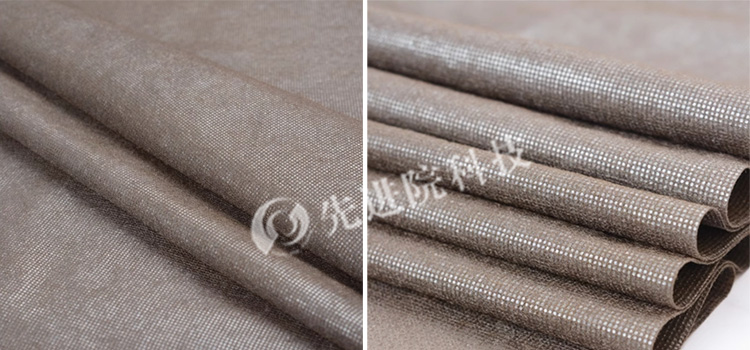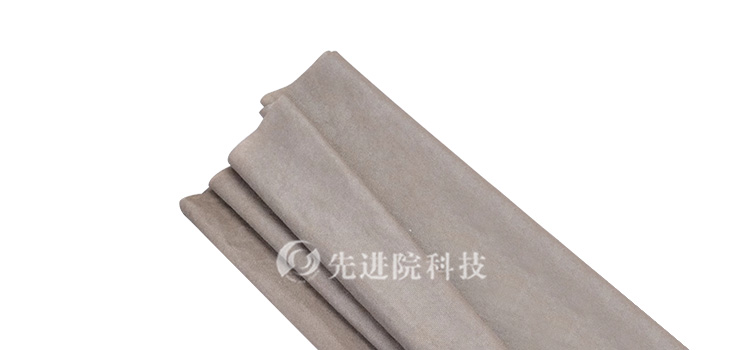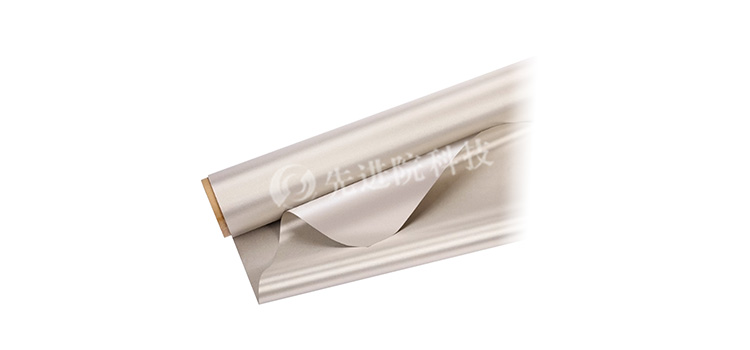

Hotline:0755-22277778
Tel:0755-22277778
Mobile:13826586185(Mr.Duan)
Fax:0755-22277776
E-mail:duanlian@xianjinyuan.cn
Conductive non-woven fabricAs an important achievement in modern materials science, it has shown great potential for applications in multiple fields such as electromagnetic shielding, anti-static, and smart textiles. This article aims to explore in depth the relationship between the conductivity of conductive non-woven fabrics and the types of fibers they contain, and to reveal the specific effects of different fiber types on conductivity performance through experimental data and comparative analysis. Meanwhile, this article will also introduce the technical characteristics and advantages of Advanced Institute (Shenzhen) Technology Co., Ltd. and its research platinum brand conductive non-woven fabric.
Conductive non-woven fabric is made conductive by introducing conductive fibers or undergoing special treatment into traditional non-woven fabric. There are various types of conductive fibers, including metal fibers, carbon fibers, conductive polymer fibers, etc. Each fiber has different conductivity, cost, processing difficulty, and other aspects. Therefore, researchConductive non-woven fabricThe relationship between conductivity and fiber type is of great significance for optimizing the performance of conductive non-woven fabrics and expanding their application fields.
The conductivity of conductive non-woven fabrics mainly comes from the presence of conductive fibers inside. These conductive fibers form conductive pathways through the transfer of electrons, allowing current to flow in non-woven fabrics. The type, content, distribution, and processing method of conductive fibers all affect the conductivity of conductive non-woven fabrics.
Metal fibers such as copper and silver have extremely high electrical conductivity and are ideal materials for preparing high conductivity non-woven fabrics. However, the cost of metal fibers is relatively high, and there may be issues with corrosion resistance and flexibility in certain application scenarios. For all that,Metal fiber conductive non-woven fabricIt still has significant advantages in fields such as electromagnetic shielding and high-frequency signal transmission.
Carbon fiber is made from high-purity carbon raw materials, which not only have excellent electrical conductivity, but also possess high mechanical strength and chemical stability.Carbon fiber conductive non-woven fabricIt has broad application prospects in fields such as smart materials, aerospace, and sports equipment. Compared with metal fibers, carbon fibers have relatively lower costs and exhibit better durability and stability during use.
Conductive polymer fibers are made by adding conductive media (such as carbon black, graphite, etc.) to the polymer matrix, and have good flexibility and plasticity. This type of fiber has a lower cost, is easy to process and shape, and is suitable for large-scale production. However, the conductivity of conductive polymer fibers may be affected by factors such as environmental humidity and temperature, and should be taken into account during use.
To verify the effect of different fiber types on the conductivity of conductive non-woven fabrics, we conducted the following experiments:
The experimental results indicate that,Metal fiber conductive non-woven fabricThe conductivity of carbon fiber type is the highest, followed by carbon fiber type, and the conductivity of polymer fiber type is the lowest. This result is consistent with expectations, as metal fibers themselves have extremely high electrical conductivity; Although carbon fiber has lower electrical conductivity than metal fiber, it is still superior to most conductive polymer materials; The conductivity of conductive polymer fibers is influenced by factors such as the content and distribution of their internal conductive medium.

As a leader in the field of materials science, Advanced Institute (Shenzhen) Technology Co., Ltd. has achieved significant results in technological innovation and product research and development in the field of conductive non-woven fabrics. The company has launchedYanbo brand conductive non-woven fabricBy adopting advanced production processes and high-quality materials, the conductivity and stability of the product are ensured. At the same time, the company has also developed a variety of conductive non-woven fabric products with different fiber types to meet the needs of different application scenarios, providing users with more flexible and diverse choices.
Conductive non-woven fabricThe conductivity is closely related to the type of fibers it contains. Metal fiber type conductive non-woven fabric has the highest conductivity, but the cost is relatively high; Carbon fiber based conductive non-woven fabric exhibits excellent conductivity and mechanical strength, and has a relatively low cost; Conductive polymer fiber type conductive non-woven fabric has good flexibility and plasticity, and is suitable for large-scale production. In practical applications, suitable fiber types should be selected according to specific needs to optimize the performance of conductive non-woven fabrics. With the continuous advancement of technology and the increasing demand for applications, conductive non-woven fabrics will play an important role in more fields, bringing more convenience and surprises to our lives.
The above data is for reference only, and specific performance may vary due to production processes and product specifications.

Advanced Institute (Shenzhen) Technology Co., Ltd, © two thousand and twenty-onewww.avanzado.cn. All rights reservedGuangdong ICP No. 2021051947-1 © two thousand and twenty-onewww.xianjinyuan.cn. All rights reservedGuangdong ICP No. 2021051947-2